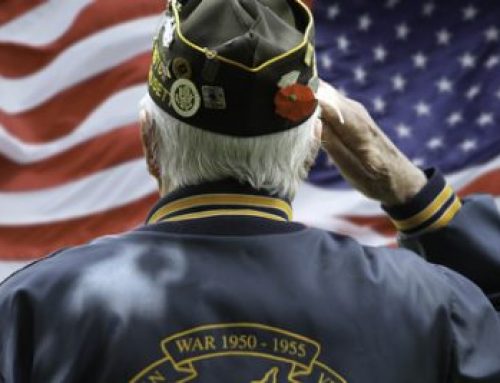 Let’s say you filed a claim for service connected disability benefits at your local VA Regional Office (RO). It will likely take six months to one year for a decision to be made. Hopefully your claim is approved after the initial application. In many cases, the claim is denied. Regardless, the RO will issue what is called a Rating Decision (RD). It will detail why the claim was either approved or denied and identify the evidence required for a successful claim. If the claim is denied in whole or in part, you have one year from the date of the RD to file an appeal. If the appeal is not filed within one year, the claim will be closed and a new one would have to be filed. The appeal is accomplished by filing a Notice of Disagreement (NOD). There are two Appellate processes that can be chosen, the Traditional Appeal Process or the Decision Review Process. You can request a hearing with a Reviewing Officer with the Decision Review Process. No such opportunity exists with the other method.
Let’s say you filed a claim for service connected disability benefits at your local VA Regional Office (RO). It will likely take six months to one year for a decision to be made. Hopefully your claim is approved after the initial application. In many cases, the claim is denied. Regardless, the RO will issue what is called a Rating Decision (RD). It will detail why the claim was either approved or denied and identify the evidence required for a successful claim. If the claim is denied in whole or in part, you have one year from the date of the RD to file an appeal. If the appeal is not filed within one year, the claim will be closed and a new one would have to be filed. The appeal is accomplished by filing a Notice of Disagreement (NOD). There are two Appellate processes that can be chosen, the Traditional Appeal Process or the Decision Review Process. You can request a hearing with a Reviewing Officer with the Decision Review Process. No such opportunity exists with the other method.
It is currently taking two to three years for the NOD to get processed. During this time period you need to be working with your Representative on gathering the required evidence identified in the RD so you will be prepared for either the hearing or the processing of your claim. You and your Representative will eventually be assigned a hearing date. At the hearing you will provide sworn testimony in support of your claim and you may submit additional evidence at that time. Do not expect a decision on that date. It is currently taking three months to a year or more for a decision to be made. Once a decision is made, a document called a Statement of the Case (SOC) will be prepared and provided to you and to your Representative. Your claim ends if it is approved and you are satisfied with the result. If it is disapproved, or you are dissatisfied with the decision, you have sixty days from the date of the SOC to appeal it. The SOC will provide a detailed explanation of the decision and the evidence required to obtain a favorable decision. The SOC is appealed by filing a Form 9. At this point in time, jurisdiction for your claim transfers from the RO to the Board of Veteran’s Appeals (BVA) in Washington, D.C. There are three separate types of hearings that can be requested when the Form 9 is filed. The most common is a live video-conference hearing. It will be conducted at the RO with you and your Representative locally and an Administrative Law Judge (ALJ) at the BVA. It is currently taking two to three years to have a hearing scheduled. During this time period you and your Representative should be continuing to develop the additional evidence that the VA states you need to support your claim. The conduct of the hearing is very similar to the one conducted by the Reviewing Officer. You will provide sworn testimony in support of your claim and you will be given an opportunity to submit additional evidence. If necessary, you can request a sixty-day extension after the hearing date to submit additional evidence. These extensions are customarily granted by the ALJ. Do not expect a decision to be made the day of the hearing. It is taking approximately three months to a year or longer for a decision. An Opinion and Order is prepared by the BVA that details their decision.
The BVA decision can take many forms – it can be fully granted; it can be fully denied; it can be partially granted and denied; it can be partially, or totally, remanded (returned) to the RO. The type of decision made will determine how much longer your claim will be in the appellate process. It will take another two to three years on average to get through this process. Let’s presume that you still have all or a portion of your claim finally denied by the BVA. You would have to file an appeal with the Court of Appeals for Veteran’s Claims (CAVC). You will have one hundred twenty days to file your Notice of Appeal with the CAVC. The character of the Appellate process changes significantly once a claim is appealed to the CAVC. The CAVC is a Federal Court. Your Representative must be an Attorney who is admitted to practice in that Court. Up to this point, it was not required that your Representative be an Attorney. The process becomes an adversarial process. This means that legally there is a dispute between two parties. Prior to this, the appellate process is theoretically non-adversarial. Technically the VA has not been an adversary. They have what is called a “duty to assist” you in obtaining your claimed benefits. That changes upon application to the CAVC. It is beyond the scope of this article to go into any further detail on the appellate process. Just be aware that if the CAVC denies your claim, the next level of appeal is the U.S. Court of Appels for the Federal Circuit. If the Federal Circuit denies your claim, the next and final stop on the appellate tour is the U.S. Supreme Court.
There are currently 500,00 claims in the pipeline at the various stages of appeals. It is not unusual for claims to take ten years or longer before they are resolved. This heightens the importance of getting competent representation as early as possible to potentially get your claim not later than the BVA.
For More Information on Veterans Administration Service Connected Disability Benefits Process
To find out how the Walus Law Group can provide solutions to your various legal requirements, contact our office for a consultation at 586-954-3250.


